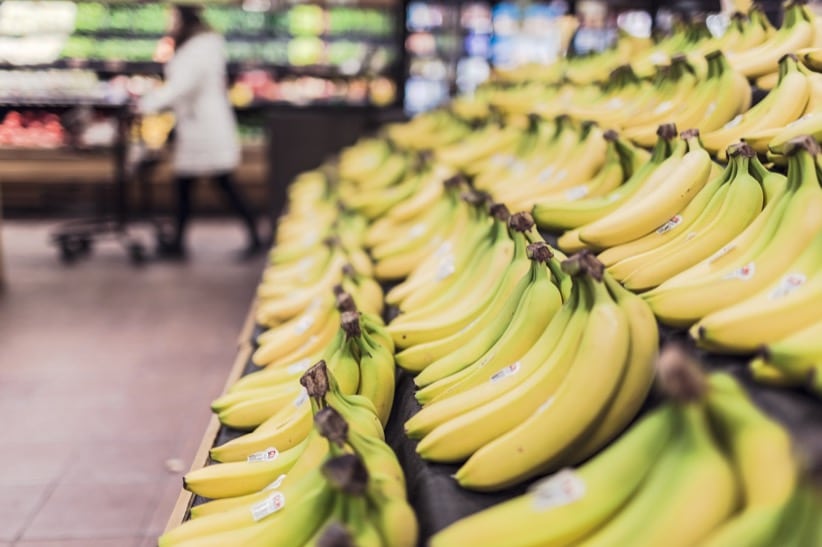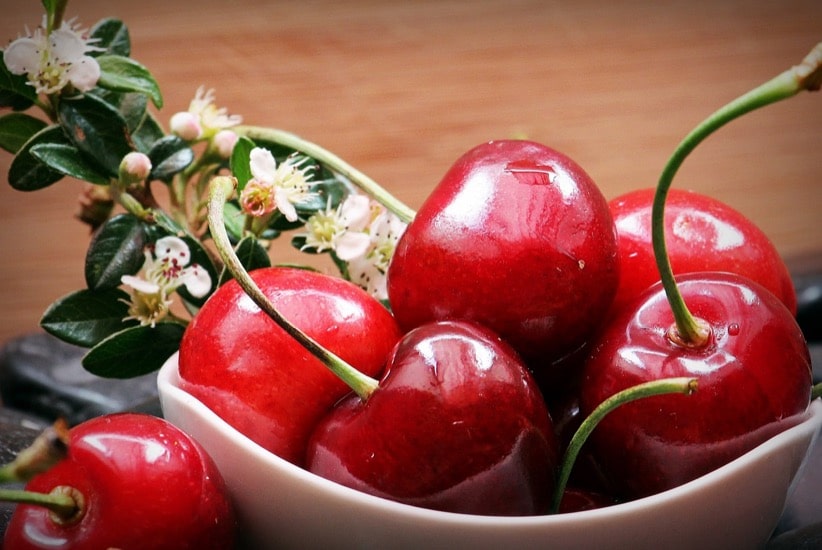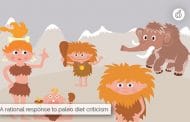Diet is important no matter what you do for an exercise regimen, whether you prefer cardio workouts or muscle-shaping ones, whether you like yoga, running, or cycling, or whether you take part in more extreme activities, like skiing or snowboarding, to keep in shape.
What you put into your body is its fuel, so it is important to choose wisely when it comes to what you’re going to put into your mouth. Those who bodybuild have to be perhaps more cautious, however, because they need a significant amount of calories to get them through the day and to keep their muscles strong. So what exactly should one eat while sticking to a bodybuilding regimen?
If you are a bodybuilder, then you have likely conducted research on which diet is best for you. And in doing your research, you may have come across the Paleo diet and may be asking yourself whether or not the Paleo diet is a good diet for you.
Let’s take a look at what goes into the Paleo diet so that you can have some more information before making your decision (after talking with your healthcare provider too, of course).
The Paleo Diet
So, in a nutshell, the Paleo diet essentially tries to capture the spirit of the caveman diet from prehistoric times. The fewer ingredients in your meal, the better.
While hunters and gatherers would have to catch their own food, now we can simply find it on the grocery store shelf. The key, however, is to make food choices that have fewer preservatives in them and that are truer to what nature intended.

A tip to remember with the Paleo diet is that if the food was still around thousands of years ago (like fish and red meat), then that’s what you should be eating now. Every meal should have a portion of fruit and vegetables, in addition to meat (which can also be chicken – it doesn’t have to be red meat).
Nuts, seeds, and oils are allowed, with oils being consumed in moderation, and typical food choices to avoid include dairy, grains, and legumes. Other foods which the Paleo diet advises you stay away from include fatty meats, foods that are high in salt (because they’re highly processed), and starchy vegetables, like potatoes.
Benefits of Sticking to a Paleo Diet
One thing bodybuilders simply love about the Paleo diet is how well it regulates your blood sugar levels, something that is difficult to do if you throw just any old thing in your grocery cart each week (and the reason why so many of us in the country have high blood sugar levels). How much better will you feel, though, once your blood sugar is better regulated?
Well, for one thing, your food cravings will be significantly less, you’ll feel less tired, and your chances of developing type 2 diabetes later in life decrease, so that’s a good thing for sure. The Paleo diet also substitutes healthy fats for the saturated fats you might otherwise be consuming, thereby lowering your cholesterol and, as a result, your risk of developing heart disease.
Bodybuilders, as well as anyone who is strictly following a workout regimen, should pay particular attention to the amount of protein they consume, as protein is needed to develop muscle mass. The Paleo diet suggests a lean meat source to be eaten with every meal, so you can get the protein you need without even having to think twice about adding it to your diet.

Since the Paleo diet encourages eating less processed and refined carbs, you may find that your calorie intake is naturally being lowered due to having less unhealthy items to choose from in your pantry. If your workout regimen requires that you eat over 2,000 calories each day (the recommended daily allowance), then you can simply throw some more nuts and seeds into your daily diet to boost your caloric intake, as well as your levels of healthy fat.
Potential Struggles for Those Following a Paleo Diet
The biggest issue that people run into while on the Paleo diet is that if they don’t plan out their meals in advance, then they find it more difficult to get the complex carbohydrates that they need in order to keep up with higher-activity workouts. While you may be tempted to just load up on more fruits and vegetables to meet your 4,000+ calorie requirement, you can end up feeling bloated as a result, since the body can only handle so much fiber in one day.
The solution? High-intensity workouts rely on glucose to fuel the body, rather than carbs, so you’ll want to stick to fruits that contain the most carbohydrates possible. Fruits of this nature include cherries, bananas, and pineapples.

Each cup of this kind of fruit contains 100 calories, so you should have less of an issue meeting your caloric requirement for the day. Plus, you’ll feel like you’re cheating on your diet by “snacking” on more sugary fruits, but you’re actually giving your body exactly what it needs to keep going.
Something else you can do, though you may not want to if you are more of a Paleo purist, is to supplement your diet with grains like brown rice or steel-cut oats. While these aren’t recommended to those following the Paleo diet, if you keep your consumption of these kinds of carbs to a minimum, then you can still reap the benefits of the Paleo diet while also giving your body the fuel it needs in order to make more energy and restore the muscle that is burned off as you exercise.
Another roadblock that some run into while on the Paleo diet is that if you prefer to follow more of a vegetarian diet, then you may have trouble getting the protein that you need each day. This is because most of what vegetarians eat, like legumes, soy, and quinoa, are all forbidden on the Paleo diet.
Vegetarians who are interested in following the Paleo diet may want to consider adding protein powder into their regimens to help them meet their daily protein requirements, and they can then design a plan for the remaining foods that would best fit the foods that they are comfortable eating. They have to be comfortable with the idea, though, that they won’t be following a true Paleo diet since any dairy or egg products that they may want to incorporate are not technically approved for the diet.
How to Start the Paleo Diet
If after reviewing all of the necessary information you are interested in starting the Paleo diet, you may wonder where to begin. Well, first thing’s first: ditch the processed and starchy carbs from your diet; these are the biggest offenders in your pantry, and they should be squarely dealt with and eliminated before moving on to the next step.

From there, start researching the foods that are allowed on the Paleo diet and make yourself a diet plan to follow. Plan a couple of weeks in advance so that you don’t find yourself falling into that complex carbohydrate deficit mentioned earlier.
Below are a few ideas to help you get started:
Approved Paleo Foods
- Meats (Beef, lamb, chicken, pork, etc.)
- Fish/Seafood (Salmon, trout, shrimp, etc. – preferably wild-caught)
- Vegetables (Broccoli, carrots, tomatoes, etc.)
- Healthy Fats/Oils (Coconut oil, avocado oil, etc.)
- Fruits (Apples, bananas, oranges, pears, etc.)
- Eggs (free-range, pastured, or omega-3)
- Nuts/Seeds (Almonds, walnuts, hazelnuts, etc.)
- Herbs/Spices (Sea salt, garlic, rosemary, etc.)
Not Allowed on the Paleo Diet
- Processed foods
- Trans fats
- Sugar/sugary drinks
- Dairy
- Legumes
- Artificial sweeteners
- Vegetable oils
- Margarine
The key point to remember here is: if it was manufactured in a factory somewhere, then don’t eat it. Try to stay as natural as possible with your food selections.
Also, be sure to read the labels before you add something to your cart. Something that might be advertised as a health food may contain anything but healthy if you look closer at its ingredients.
Conclusion
So now you should have plenty of information from this post to help you decide whether or not the Paleo diet is right for you. You also know how to modify the diet if you are a vegetarian or if you engage in workouts of a higher intensity.
You know what foods are allowed, and which foods to avoid, and you know that you have to plan your meals in advance, else you could find yourself struggling to meet your complex carbohydrate requirements for the day.
The Paleo diet can help you get back to eating cleaner, stripping your diet of the saturated fats, sugars, and processed foods that might have otherwise made up your entire diet. Switching over to a more Paleo-heavy diet plan can help you shed pounds in no time, and yes it is possible to still benefit from the Paleo diet while taking part in bodybuilding.
Are you a bodybuilder who is following the Paleo diet? Let us know if you have any tips for those who may be interested in changing up their diet while continuing to enjoy a higher intensity workout regimen.






